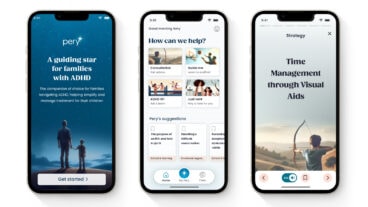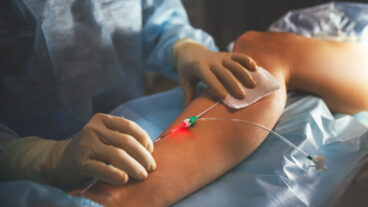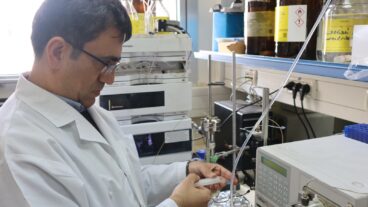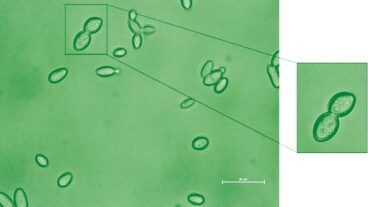The Vein Entry Indicator VEID device alerts the doctor, nurse or technician inserting a needle into a vein that they have hit a vein by letting out a beeping sound.Even the bravest and most stoic of us cringe at the thought of having a needle inserted into our veins to draw blood, or administer medication through an IV.
The experience is particularly unpleasant and sometimes traumatic for those who have veins that are hard to locate, requiring a stretch of time and several attempts until the blood is flowing into the appropriate vial.
Anyone who has been through this experience can appreciate the value of a new Israeli-invented device that makes the process far quicker and easier.
The Vein Entry Indicator VEID device alerts the doctor, nurse or technician inserting a needle into a vein that they have hit a vein by letting out a beeping sound. The device is a small plastic box attached to the proximal end of a standard I.V. catheter. It consists of a pressure sensor, signal indicator and processing unit. Once the tip of the needle enters the vein and a pressure increase is detected, the audio signal begins to be emitted within less than a tenth of a second. If the needle tip exits the vein, the beeping stops.
The story of how the device was invented is uniquely Israeli.
“If it weren’t for my reserve duty in the army, I would never have been aware of this problem,” says Eli Matalon, the inventor of the device and the CEO of Vascular Technologies, Ltd., the company he has formed to produce and market the device.
Matalon, an experienced engineer from Rehovot, trained as a reservist in the Israel Defense Forces to serve as a medic. While the difficulty of hitting a vein while drawing blood is well-known throughout the medical establishment, few people with an engineer’s experience repeatedly find themselves close enough to the situation to begin thinking of a solution.
As a result of his duties as a medic, Matalon decided to tackle the problem. On the battlefield, and in medical facilities, he saw how hard it was under field conditions and other high-pressure situations to insert a catheter into a vein.
“It can be very difficult in a trauma situation, when a patient has lost a lot of blood, to get the needle inside the vein. There are times when you have to stick a patient 20 times to find a vein. I remember seeing them work on a 12 year old girl for two hours to find a vein – in the end they had to do a procedure where they had to open up her foot to gain access,” he told ISRAEL21c.
The problem of failed vein entry can cause serious complications for patients, and in some cases, cost lives.
The problem, he explains, is that today, a doctor, nurse, or technician only knows that he has successfully hit a vein by seeing a ‘backsplash’ of blood.
“Today, when you insert the IV, there is a flashback chamber. When you see blood enter the flashback chamber, you know for sure that the needle has hit the vein. The problem is that when the patient is in a state of shock and has lost a lot of blood, it takes time for the blood to flow into the chamber. In this situation, it is very difficult to locate the vein. With the VEID, it is far easier.”
His device, which attaches to the back of the blood-drawing catheter is different in that it senses and registers the change in pressure at the exact moment when the needle penetrates the vein. If the needle leaves the vein, the beeping stops.
“When the person taking the blood is looking at the back of the needle, they aren’t watching the insertion point. Since the VEID entry signal is audio, they can look where they are putting the needle,” noted Matalon.
An additional problem with the current method is that once the flashback chamber is full of blood, it cannot serve as an indication for the position of the tip of the needle for a second attempt, and so the second attempt is even more problematic, and a new needle may be necessary. The VEID can be immediately reused as many times as needed – when it’s in the vein, it beeps, when it’s out, it stops.
Aside from his 30-day medic course in the army, Matalon has no formal medical training. He grew up in Holon, served in the navy during his mandatory army service and studied mechanical engineering at Ben-Gurion University of the Negev. Later he worked as a product manager in a large company and ran his own industrial automation company, along the way picking up an MBA at Tel Aviv University.
All this time, he was doing his army reserve service as a medic with his idea for VEID brewing in his mind, until one day in 1996, “I closed down the company I was running and decided to devote myself to developing the idea for a vein entry indicator.”
He entered the government’s Technological Incubator program, and in the two year period, by 1998, he had patented a working device that he developed with the help of a team of eight engineers.
An important next step was testing it in the field. A study at the Schneider Children’s Medical Center found that the success rate for inserting a needle and catheter into children rose from 70% to 91% when the VEID device was used.
The children in the study were grouped into those who had easy veins to access, veins with medium difficulty and difficult veins.
“In the group with difficult veins, the difference was very dramatic – only 26% successfully inserted the needle into the vein on the first try without the device and 97% did it with the device,? he said.
In the overall group, insertion was accomplished in 91% of cases at the first attempt, in 8% of cases in the second attempt and in 1% of cases on the third attempt, compared to 69% on the first, 29% on the second and 3% on the third attempt without the VEID.
Matalon was ready to go to market with his successfully tested and FDA-approved device – when his business plan hit a major obstacle. All of the international companies he approached for a partnership in producing and distributing the VEID were extremely interested – but after surveying their market, they told him that they couldn’t sell it as it was designed, as a reusable device. They would only be interested, they said, in a disposable model which would appeal to a wider market.
“It was a big crisis,” he admits, and if he were less determined and believed in his product less, may have been tempted to shut the company down at that point.
But instead he took a large financial risk, borrowing money and seeking additional investment to develop a disposable version.
“I knew this was a good technology; it had proved itself and I had gotten good feedback from companies, who told me that the customers would be willing to spend the money on the disposable version. In 2000, I found an investor in the US who put the money in to develop it.”
In developing the disposable version, the company improved it by adding a blinking light to the audio beep.
“The light is very useful for a noisy environment like a helicopter, and where it is extremely dark and you can’t see the blood in the chamber.”
Matalon says the initial market for the device will be those with difficult veins to access – particularly pediatric patients, trauma patients, cancer patients and the geriatric population.
He is currently in discussions with five companies, most of them American for joint development and marketing of the disposable version, which are examining and testing the device for themselves. Since his earlier reusable version already has an FDA approval, he believes the regulatory process for the disposable device will be quick.
“Once the initial product is out, I have more ideas for entry to central arteries and veins and for spinal puncture procedures,” he adds. “I know there is great potential here to improve care and even save lives.”












